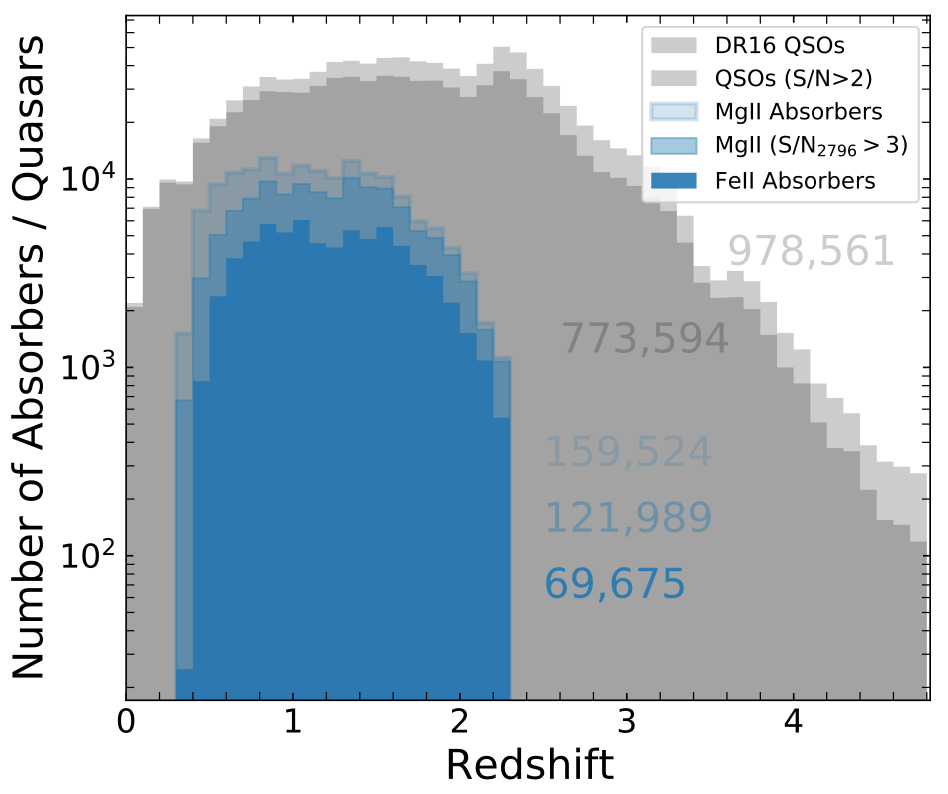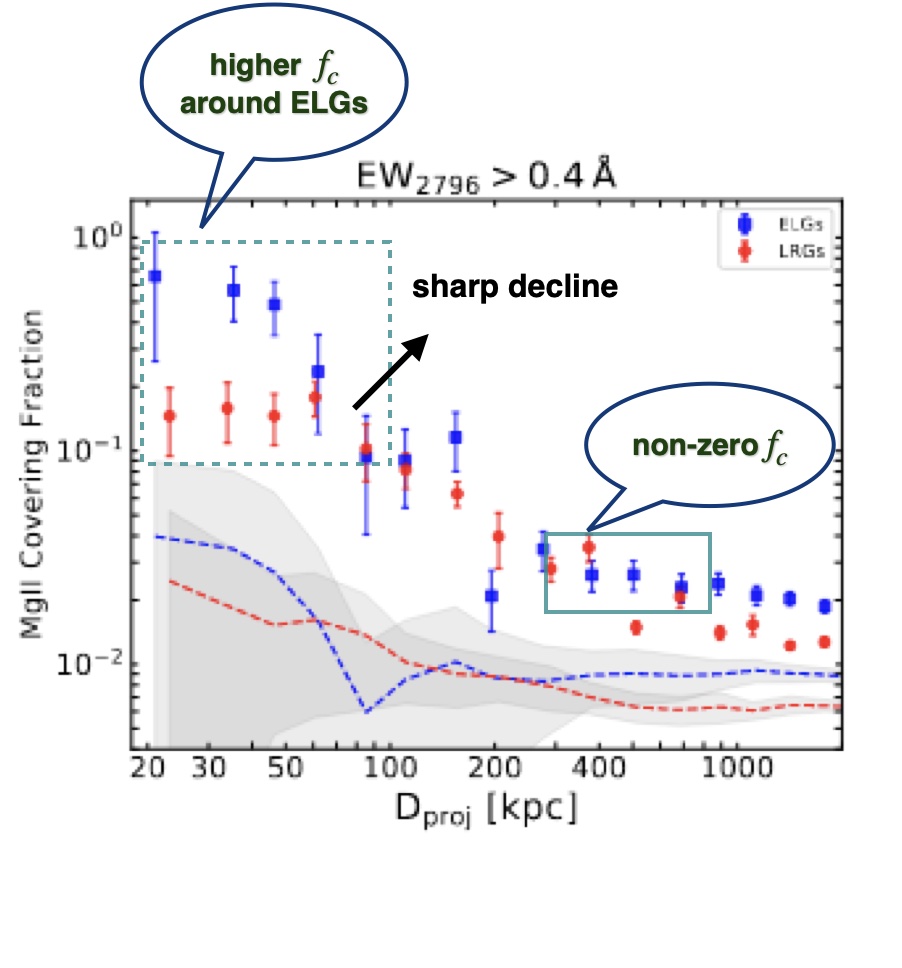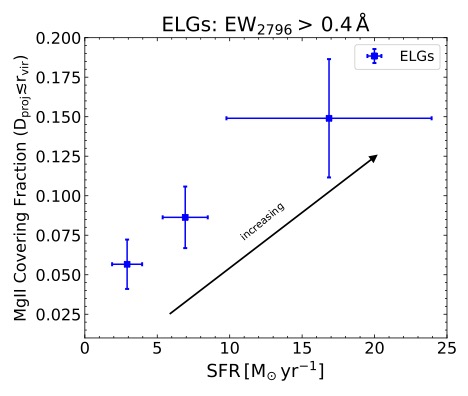The cool CGM of SDSS galaxies in absorption
See my paper for details (Anand et al. 2021).
Summary
 In this work, I have developed a fully automated
pipeline to model the quasar continuum and detect MgII absorbers
in their spectra. I ran the developed pipeline on ~ 1 million
quasar spectra from SDSS DR16 and compiled the largest MgII and
FeII absorber catalogue available to date (see histogram of
redshifts). The absorber catalogue is publicly available at this
link for the community.
In this work, I have developed a fully automated
pipeline to model the quasar continuum and detect MgII absorbers
in their spectra. I ran the developed pipeline on ~ 1 million
quasar spectra from SDSS DR16 and compiled the largest MgII and
FeII absorber catalogue available to date (see histogram of
redshifts). The absorber catalogue is publicly available at this
link for the community.
 In the second half of the
paper, I connected these MgII absorbers to the circumgalactic
medium (CGM) of ~ 200,000 emission-line galaxies (ELGs) and ~ 1.1
million luminous red galaxies (LRGs) from the SDSS DR16 to
characterize the properties of cool gas in their CGM. Thanks to
these large sample sizes, our analysis characterized the scale
dependence of MgII absorption in the halo of galaxies with much
more accuracy than previously reported works. We find that both
MgII absorption and its covering fraction are 2 - 5 times higher
in the CGM of ELGs than LRGs within ~ 50 kpc from the galaxy.
Also, there is a very sharp decline in the covering fraction for
both kinds of galaxies, and at large distances, they are within
the error bars (see Figure). The rapid decline in the covering
fraction at ~ 50 kpc implies that MgII properties are regulated by
galactic outflows in the inner part of CGM, while it is tightly
linked with the dark matter halo in outer regions.
In the second half of the
paper, I connected these MgII absorbers to the circumgalactic
medium (CGM) of ~ 200,000 emission-line galaxies (ELGs) and ~ 1.1
million luminous red galaxies (LRGs) from the SDSS DR16 to
characterize the properties of cool gas in their CGM. Thanks to
these large sample sizes, our analysis characterized the scale
dependence of MgII absorption in the halo of galaxies with much
more accuracy than previously reported works. We find that both
MgII absorption and its covering fraction are 2 - 5 times higher
in the CGM of ELGs than LRGs within ~ 50 kpc from the galaxy.
Also, there is a very sharp decline in the covering fraction for
both kinds of galaxies, and at large distances, they are within
the error bars (see Figure). The rapid decline in the covering
fraction at ~ 50 kpc implies that MgII properties are regulated by
galactic outflows in the inner part of CGM, while it is tightly
linked with the dark matter halo in outer regions.
 We
also find that the stellar activity of ELGs play a very important
role in enriching their CGM, where the MgII covering fraction
correlates strongly with the star formation activity (SFR) of the
galaxy (see Figure). In addition, we also see that MgII is rarely
detected in the massive halos. The relative line-of-sight (LOS)
velocity analysis also supports an outflow origin of MgII gas in
ELGs, where the velocity dispersion of absorbing cloud relative to
the halo is similar to the virial velocity of the dark matter
halo. On the other hand, it is suppressed by 40-50 % in the LRGs,
suggesting a different origin of MgII gas in their halo, possibly
accretion or stripping from neighbouring halo. To summarize, our
analysis combined with previous studies implied that cool
circumgalactic gas has a different physical origin for
star-forming versus quiescent galaxies.
We
also find that the stellar activity of ELGs play a very important
role in enriching their CGM, where the MgII covering fraction
correlates strongly with the star formation activity (SFR) of the
galaxy (see Figure). In addition, we also see that MgII is rarely
detected in the massive halos. The relative line-of-sight (LOS)
velocity analysis also supports an outflow origin of MgII gas in
ELGs, where the velocity dispersion of absorbing cloud relative to
the halo is similar to the virial velocity of the dark matter
halo. On the other hand, it is suppressed by 40-50 % in the LRGs,
suggesting a different origin of MgII gas in their halo, possibly
accretion or stripping from neighbouring halo. To summarize, our
analysis combined with previous studies implied that cool
circumgalactic gas has a different physical origin for
star-forming versus quiescent galaxies.